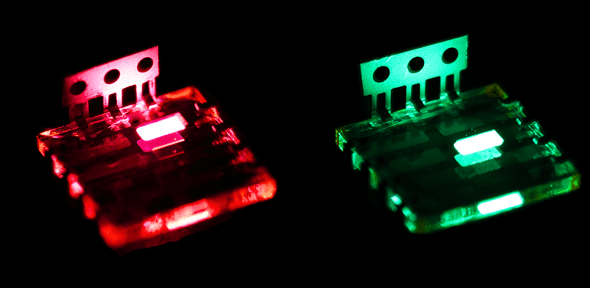
We’ve covered quite a bit the recent developments involving perovskite as an extremely promising light-to-energy conversion semiconductor. Now, researchers at University of Cambridge, University of Oxford, and Ludwig-Maximilians-Universität are performing research on perovskite-based devices that work the other way around by emitting light. Their research has turned out promising results that suggest high-brightness LEDs, manufactured at low cost and more easily, can be harnessed using perovskite.
High power LEDs of the future
“Perovskite” is a general term used to describe a group of materials that have a distinctive crystal structure of cuboid and diamond shapes. Their efficiency at converting light into electrical energy has opened up a wide range of potential applications. The perovskites that were used to make the LEDs are known as organometal halide perovskites, and contain a mixture of lead, carbon-based ions, and halogen ions known as halides. These materials dissolve well in common solvents, and assemble to form perovskite crystals when dried, making them cheap and simple to make.
“These organometal halide perovskites are remarkable semiconductors,” said Zhi-Kuang Tan, a PhD student at the University of Cambridge’s Cavendish Laboratory and the paper’s lead author. “We have designed the diode structure to confine electrical charges into a very thin layer of the perovskite, which sets up conditions for the electron-hole capture process to produce light emission.”
The team reports an infrared radiance of 13.2 W sr−1 m−2 at a current density of 363 mA cm−2, with highest external and internal quantum efficiencies of 0.76% and 3.4%, respectively. The LEDs were made a simple manufacturing process, where the perovskite solution is prepared and spin-coated onto a substrate. Unlike current LED manufacturing, the process doesn’t involve high temperature, vacuum or complex purification procedures, because the perovskite assembles readily into crystals. The team is now looking to increase the efficiency of the LEDs and to use them for diode lasers, which are used in a range of scientific, medical and industrial applications, such as materials processing and medical equipment.
Findings appeared in the journal Nature Communications.
Was this helpful?



